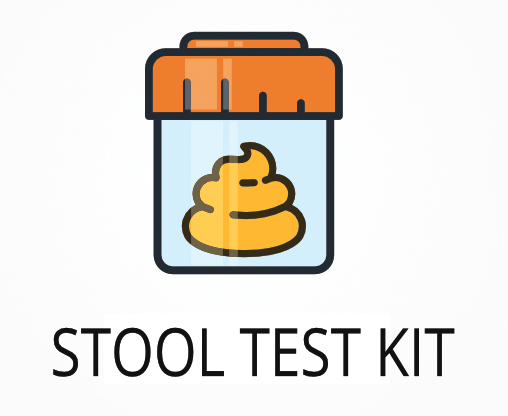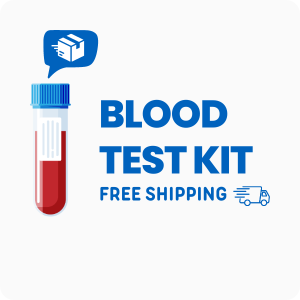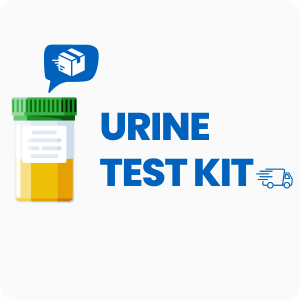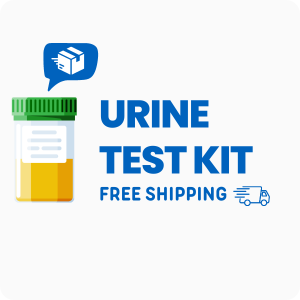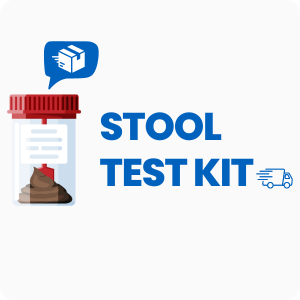Ordering the DNA Stool Test | Microbial Ecology Profile (Gut Bacterial Analysis) | Europe
Ordering the DNA Stool Test | Microbial Ecology Profile (Gut Bacterial Analysis) helps identify the types and balance of commensal (beneficial) bacteria in your gut. This test can show if there are too many or too few of certain microbes, which may be linked to symptoms like bloating, constipation, diarrhea, or food intolerance. Research shows that gut bacteria can also affect how your body stores fat and responds to certain foods.
When ordering this test, you can expect:
- Detailed analysis of key commensal gut bacteria using advanced DNA technology
- Identification of imbalances that may be linked to digestive symptoms
- Personalized recommendations for prebiotics and probiotics based on your results
- Botanical and pharmaceutical sensitivity testing for targeted support
Who Should Consider Gut Microbiota and Digestive Health Testing
People who have ongoing digestive symptoms, such as frequent bloating, stomach cramps, or changes in bowel habits, may benefit from this test. For example, someone who has tried different diets and still experiences discomfort after eating could use this test to find out if an imbalance in gut bacteria is contributing to their symptoms.
Ordering this test may also be helpful in these situations:
- Recurring constipation or diarrhea that does not improve with simple changes
- Food intolerances or sensitivities that are hard to pinpoint
- Unexplained fatigue or skin issues that may be linked to gut health
- History of frequent antibiotic use, which can disrupt gut bacteria
- Unexpected weight changes that may be related to gut flora balance
Testing can help pinpoint the cause of digestive symptoms by measuring specific commensal bacteria in your stool. Delaying this test could mean missing the chance to address imbalances early, which may allow symptoms to continue or worsen.
How to Prepare for Gut Bacterial Analysis and Microbial Ecology Testing
Fasting is not required for this stool test, so you can eat and drink as usual before collecting your sample. Always follow any instructions provided by your doctor or healthcare practitioner to make sure your sample is collected and shipped correctly.
Labs Included When Ordering Your DNA Stool Test | Microbial Ecology Profile (Gut Bacterial Analysis)
| Test Name | Reference Range | Significance | Low and High Levels of DNA Stool Test | Microbial Ecology Profile (Gut Bacterial Analysis) |
|---|---|---|---|
| Bacteroidetes Phylum | |||
| Bacteroides-Prevotella group | 109–1011 CFU/g | Major group for carbohydrate and fiber digestion; supports gut health. | High: Possible overgrowth, linked to inflammation or digestive upset. Low: Reduced fiber digestion, possible imbalance. |
| Bacteroides vulgatus | 108–1010 CFU/g | Key species for breaking down complex carbohydrates. | High: May indicate dysbiosis. Low: Reduced carbohydrate breakdown. |
| Barnesiella spp. | 107–109 CFU/g | Supports immune function and gut barrier. | High: Rare, may indicate imbalance. Low: Reduced immune support. |
| Odoribacter spp. | 106–108 CFU/g | Produces short-chain fatty acids for gut health. | High: May indicate fiber-rich diet. Low: Less SCFA production. |
| Prevotella spp. | 107–109 CFU/g | Linked to plant-rich diets and carbohydrate digestion. | High: May be linked to inflammation in some. Low: Less plant fiber digestion. |
| Firmicutes Phylum | |||
| Anaerotruncus colihominis | 105–107 CFU/g | Produces butyrate, supports gut lining. | High: Rare, may indicate imbalance. Low: Less butyrate production. |
| Butyrivibrio crossotus | 106–108 CFU/g | Butyrate producer, anti-inflammatory effects. | High: May indicate high fiber intake. Low: Reduced anti-inflammatory support. |
| Clostridium spp. | 108–1010 CFU/g | Breaks down fiber, produces SCFAs. | High: Possible toxin production. Low: Less fiber breakdown. |
| Coprococcus eutactus | 106–108 CFU/g | Butyrate producer, supports gut health. | High: May indicate high fiber intake. Low: Less butyrate, possible inflammation. |
| Faecalibacterium prausnitzii | 108–1010 CFU/g | Major anti-inflammatory species, supports gut barrier. | High: Rare, usually beneficial. Low: Linked to gut inflammation. |
| Lactobacillus spp. | 106–108 CFU/g | Supports digestion, immune function, and gut pH. | High: Possible overgrowth, sometimes linked to bloating. Low: Less support for digestion and immune balance. |
| Pseudoflavonifractor spp. | 105–107 CFU/g | Involved in fiber fermentation. | High: May indicate imbalance. Low: Less fiber fermentation. |
| Roseburia spp. | 107–109 CFU/g | Butyrate producer, supports gut lining. | High: May indicate high fiber intake. Low: Less butyrate, possible inflammation. |
| Ruminococcus spp. | 107–109 CFU/g | Breaks down resistant starch and fiber. | High: May indicate high fiber diet. Low: Less fiber breakdown. |
| Veillonella spp. | 105–107 CFU/g | Converts lactate to propionate, supports gut health. | High: May indicate imbalance. Low: Less propionate production. |
| Actinobacteria Phylum | |||
| Bifidobacterium spp. | 108–1010 CFU/g | Supports digestion, immune function, and gut barrier. | High: Usually beneficial. Low: Less fiber breakdown, weaker gut barrier. |
| Bifidobacterium longum | 107–109 CFU/g | Key species for gut health and immune support. | High: Usually beneficial. Low: Reduced immune support. |
| Collinsella aerofaciens | 106–108 CFU/g | Involved in carbohydrate metabolism. | High: May indicate imbalance. Low: Less carbohydrate metabolism. |
| Proteobacteria Phylum | |||
| Desulfovibrio piger | 105–107 CFU/g | Sulfate-reducing bacteria, involved in sulfur metabolism. | High: May be linked to gut irritation. Low: Less sulfur metabolism. |
| Escherichia coli | 106–108 CFU/g | Normal in small amounts, helps with vitamin K production. | High: Possible gut upset. Low: Reduced diversity. |
| Oxalobacter formigenes | 105–107 CFU/g | Breaks down oxalate, may reduce kidney stone risk. | High: Usually beneficial. Low: Higher risk of oxalate buildup. |
| Euryarchaeota Phylum | |||
| Methanobrevibacter smithii | 106–108 CFU/g | Methane producer, linked to constipation if high. | High: May cause constipation. Low: Less methane, possible diarrhea. |
| Fusobacteria Phylum | |||
| Fusobacterium spp. | 106–108 CFU/g | Part of normal flora, but high levels may be linked to inflammation. | High: Possible risk for gut inflammation. Low: Reduced diversity. |
| Verrucomicrobia Phylum | |||
| Akkermansia muciniphila | 106–108 CFU/g | Supports gut barrier, linked to metabolic health. | High: Usually beneficial. Low: Weaker gut barrier, possible metabolic issues. |
| Firmicutes/Bacteroidetes Ratio | |||
| Firmicutes/Bacteroidetes (F/B Ratio) | 0.7–1.5 | Balance between these two phyla is linked to weight, metabolism, and gut health. | High: May be linked to weight gain and fat storage. Low: May be linked to inflammation or weight loss. |
Reference ranges may change slightly as labs update their methods and research advances.
DNA Stool Test | Microbial Ecology Profile (Gut Bacterial Analysis) FAQ
Is there DNA Stool Test | Microbial Ecology Profile (Gut Bacterial Analysis) testing near me?
This is a home test kit, so you can collect your stool sample at home and send it to the lab using the provided instructions. If you have ongoing digestive symptoms, being able to collect your sample at home means you can avoid travel and get answers more quickly.
How do I interpret the test results?
While your treating physician should review your results, you can also use our one-on-one test results review service for a detailed explanation from our clinical team.
What is the cost of the test?
The price listed for this test includes standard shipping to you and return shipping to the lab, but draw fees may apply. Ordering this test can help you find the cause of digestive symptoms and start targeted support sooner.
How often should I retest?
Retesting is usually recommended every 6 to 12 months, especially if you are making changes to your diet or treatment plan, to track improvements or new imbalances.
How accurate is the test?
This test uses advanced DNA sequencing (PCR and next-generation sequencing) to detect commensal bacteria with a specificity of 98% and sensitivity of 97%. TrueHealthLabs.com partners with CLIA-certified and CAP-certified laboratories to uphold rigorous testing standards for dependable results.
Important Notes
- Return shipping costs are the responsibility of the customer. Please ensure all samples arrive at the lab within one week of collecting the first sample.
Medical Review Board
Reviewed by Jeff Donohue M.D. from Body Logic and Brady Hurst DC, CCCN. Written by True Health Lab’s team of editorial health contributors.
Disclaimer: This information is for educational purposes only and not intended as medical advice. Consult your healthcare provider for personalized guidance.
Why Customers Trust True Health Labs – What People are saying
Also rated 4.6 out of 5 based on 3452 ShopperApproved reviews- See all TrueHealthLabs.com reviews.


